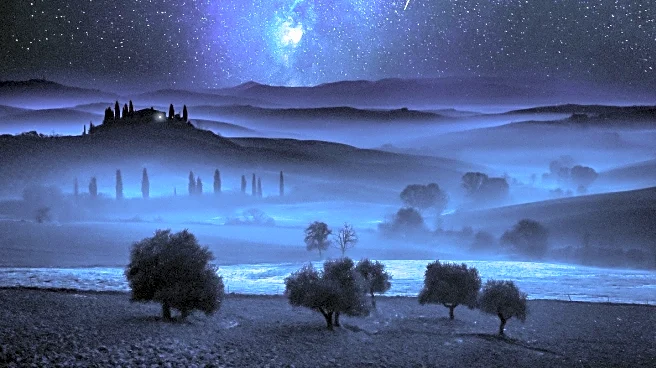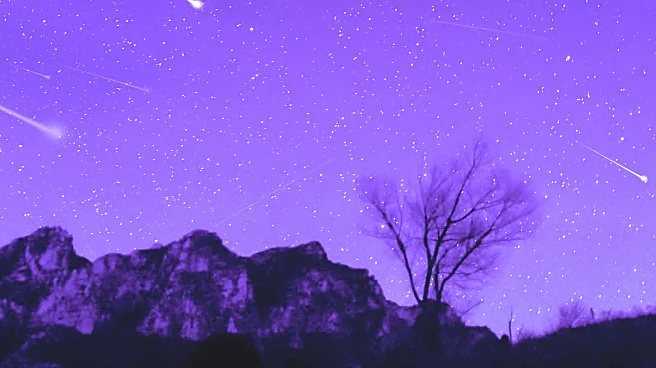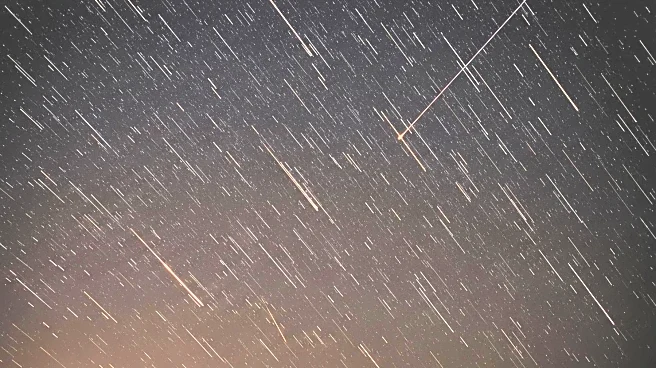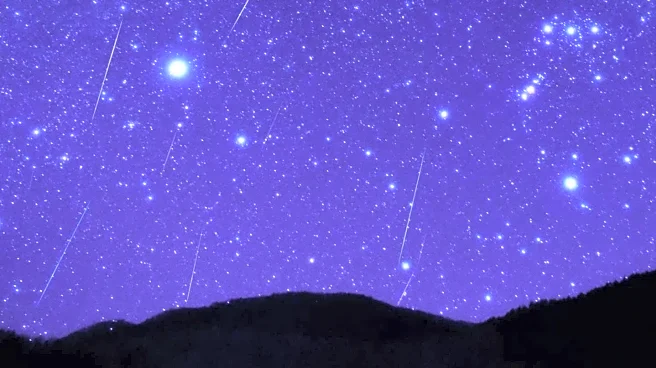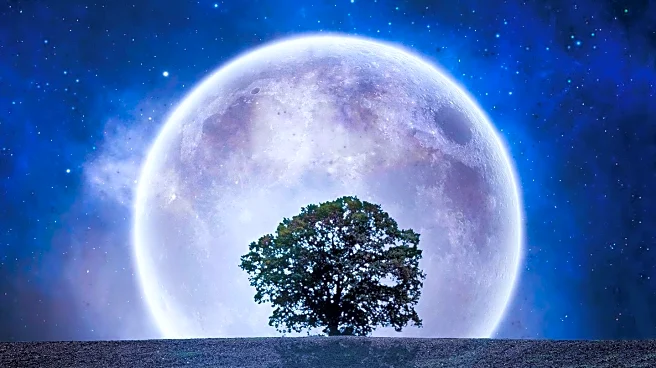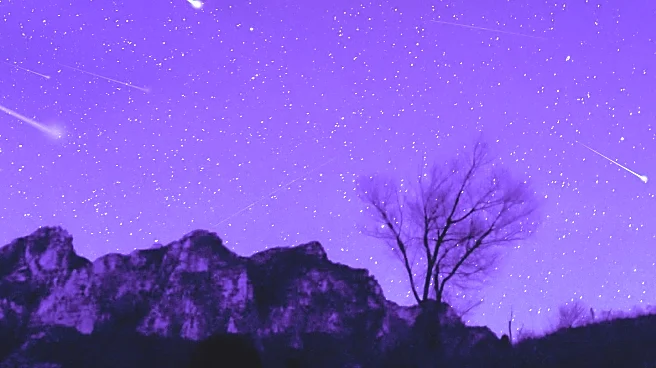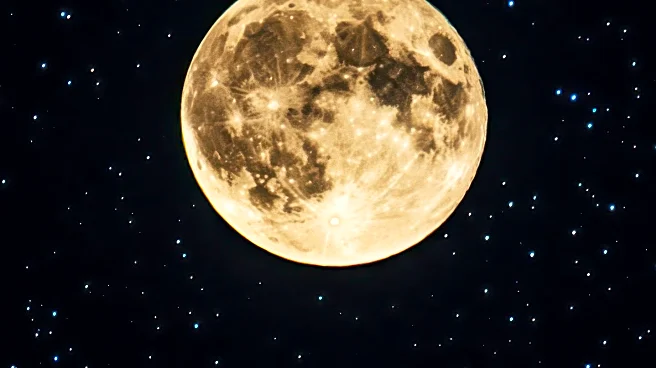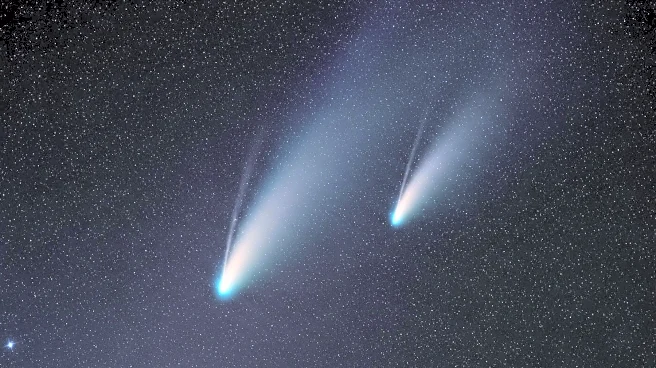What's Happening?
The Draconids meteor shower is expected to light up the night sky this week, offering a spectacular view for stargazers. Named after the Draco constellation, the meteors will be visible across the United States and other parts of the Northern Hemisphere. The shower results from debris left by the comet 21P Giacobini-Zinner burning up in Earth's atmosphere. The peak viewing time is predicted for October 8, around 19:00 UTC, with up to 10 meteors per hour under ideal conditions. A waning gibbous moon may affect visibility, but stargazers are advised to find dark areas away from light pollution.
Why It's Important?
Meteor showers like the Draconids offer a unique opportunity for scientific observation and public engagement with astronomy. They can inspire interest in space science and provide educational moments for schools and families. The event also highlights the importance of preserving dark skies, free from light pollution, which is crucial for astronomical observations. The Draconids shower, occurring annually, serves as a reminder of the dynamic nature of our solar system and the ongoing interactions between celestial bodies.
What's Next?
Following the Draconids, the Orionids meteor shower is expected later in October, providing another chance for stargazing. Observatories and astronomy clubs may organize viewing events, enhancing community engagement with science. Additionally, ongoing discussions about light pollution may gain traction, encouraging efforts to protect night skies for future astronomical events.
Beyond the Headlines
Meteor showers can have cultural significance, often associated with myths and legends. They also offer a moment of reflection on humanity's place in the universe, fostering a sense of wonder and curiosity. The Draconids, with their evening peak, provide a more accessible viewing opportunity, potentially increasing public interest in astronomy.

